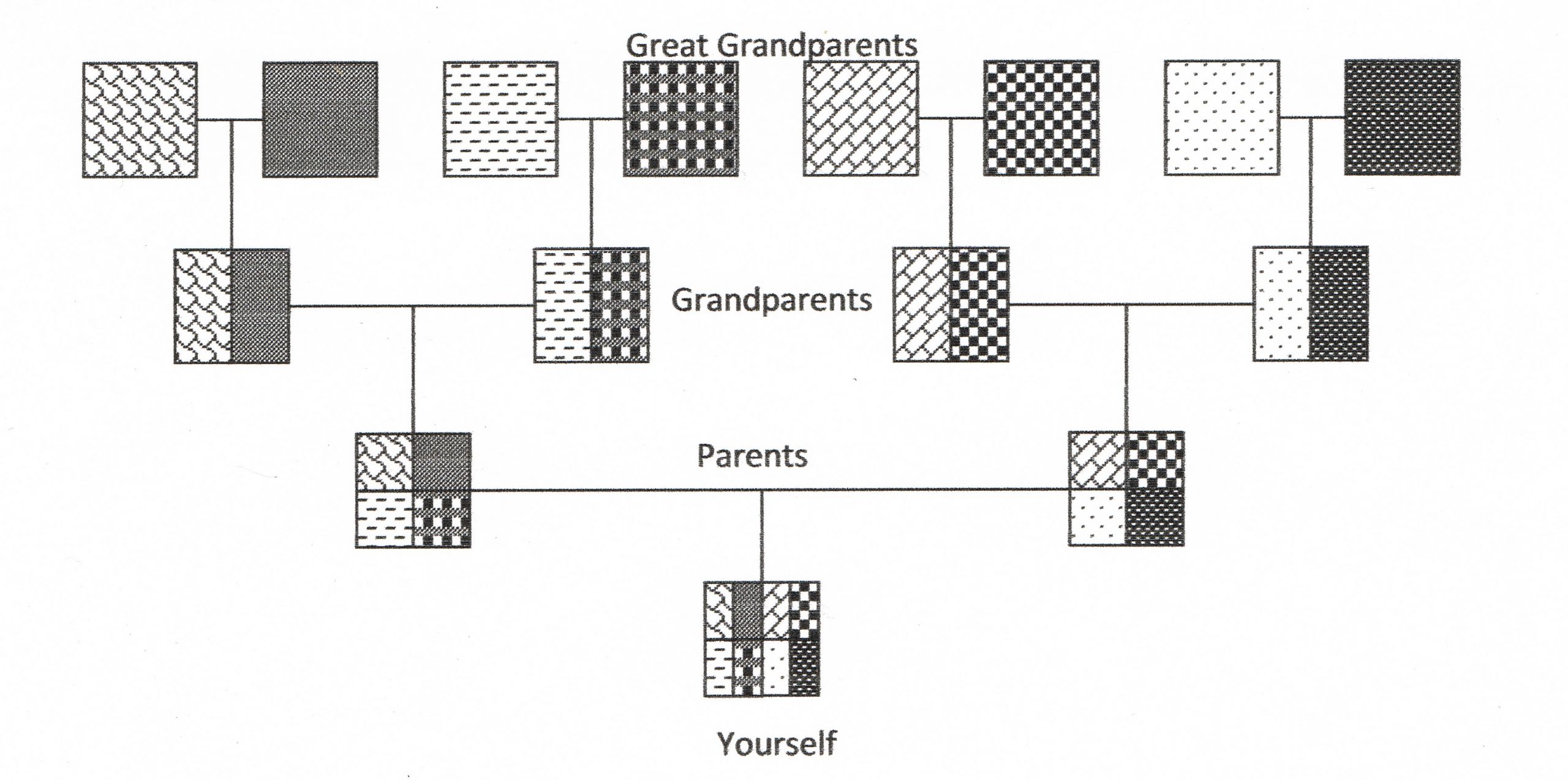“Will you do a DNA test?”, is not an easy question to ask or answer. Here’s one perspective on why you should ask others and the reasons to consider when answering that question from a relative or even a stranger.
We each inherit approximately half of our DNA from each parent, who got approximately half of theirs from each of your grandparents, etc. Testing typically only considers DNA from the past five generations because the portions after that are very small and will result in more ‘false’ positives.

There are three DNA tests available as a research tool and three companies who offer this service to consumers.
| Y-Chromosome | AncestryDNA.com | |
| Mitochondrial (mtDNA) | FamilyTreeDNA.com | |
| Autosomal (atDNA) | 23andMe.com |
- Each test determines the pattern of your specific DNA and compares it to samples from specific populations in order to give you estimates of your ethnicity background.
- DNA is NOT a magic bullet – it is a tool in a genealogist’s research toolbox.
- Taking a test involves either a swab of your cheek or spitting into a small tube.
- Results of DNA testing do NOT automatically fill in your family tree – they do NOT include any names or dates. Results of DNA testing allow someone to compare the results of various tests and find other individuals with whom you share enough DNA that there is a probability that you are related.
- Matching your results with those of others generates predictions of familial relationships based on the percentage or number of centimorgans (cMs) of DNA shared between you. Here is a chart of the amounts shared and potential relationships:
- Haplogroup: A group of similar haplotypes that share a common ancestor with a SNP mutation. Because a haplogroup consists of similar haplotypes, it is possible to predict a haplogroup. A SNP test confirms a haplogroup. Haplogroups are assigned letters of the alphabet, and refinements consist of additional number and letter combinations. Haplogroups pertain to your deep ancestral origins dating back thousands of years.
- Single-nucleotide polymorphism (SNP): (pronounced snip) A SNP test confirms your haplogroup by determining if a SNP has mutated from its derived or ancestral state. A SNP is usually found on a different area of the Y-chromosome than where the Y-STR markers are. Sometimes, a SNP may cause a null result on a marker.
- Short tandem repeat (STR): Patterns in the DNA sequence which repeat over and over again in tandem, i.e., right after each other. Typically the repeat motif is less than six base pairs long. By counting the repeats, one gets an allele value which is given in an individual’s haplotype. STRs are also known as microsatellites and simple sequence repeats (SSRs).
| % Shared | cMs Shared | Potential Relationship | Probable Match on Your Tree: |
| 50 | 3400 | Parent/Child | |
| 50 | 2800-4000 | Sibling | Parent |
| 25 | 1200-2200 | Grandparent, grandchild; uncle/aunt and niece/nephew; half-siblings; double first cousins | Grandparent; Parent |
| 12.5 | 500-950 | 1st cousins; great-grandparents; great-uncle or aunt; half-aunt/uncle; half nephew/niece | Grandparent; Great-Grandparent; |
| 6.25 | 225-580 | First cousins once removed; half first-cousins | Great-Grandparent |
| 3.125 | 170-340 | Second cousins; first cousins twice removed | Great-Grandparent; Grandparent |
| 1.5 | 34-170 | Second cousins once removed; half-second cousins. | Great-Great Grandparent |
| 0.78 | 20-135 | Third cousins; second cousins twice removed | Great Grandparent |
| 0.4 | 7-88 | Third cousins once removed | Great-Great Grandparent |
| 0.2 | 0-34 | Fourth cousins and more distant |
Bibliography:
- “Genetic Genealogy Standards,” Online <(http://www.geneticgenealogystandards.com/>.
- International Society of Genetic Genealogy Wiki. Online <www.isogg.org/wiki/Wiki_Welcome_Page>.
- Russell, Judy G, JD, CG, CGL. Online <www.legalgenealogist.com>. Blog posts on DNA.
- Smolenyak, Megan and Ann Turner, Trace Your Roots with DNA. New York: Holtzbrinck Publishers, 2004.
Additional Resources:
I gathered a great deal of information from the following speakers as I started to use DNA as part of my research toolbox:
Blaine Bettinger, Tim Jansen, Cece Moore, Shellee Moorehead, Debbie Parker Wayne
